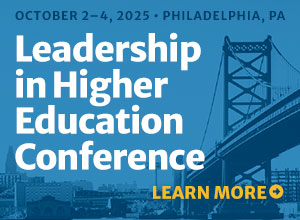The Importance of Non-Cognitive Factors
The last few years have brought an explosion of interest in the role of non-cognitive factors in education, those behaviors outside of course content that make a real difference in student success. Educational researchers have begun to examine the ways in which colleges and universities can encourage students to develop...
Hearing the Call: Helping Students Find a Vocation, Not Just a Job
Ask any potential student or their parents about their top concerns when choosing a college, and “employability” will likely be on the list. A host of societal factors have combined to make this true: First, the Great Recession of 2008 made families much more concerned about the cost/benefit rationale for...
Closing the Skills Expectations–Performance Gap
A Google search for “college graduate employment readiness” produces over 2.5 million hits. Unfortunately, the top results have titles such as, “Study Finds Big Gap between Student and Employer Perceptions” (Inside Higher Ed); “Why Are So Many College Students Failing to Gain Job Skills before Graduation?” (Washington Post); and “2015...
Moving from Courses to a Curriculum
What does it mean to offer students a curriculum as opposed to a series of related courses? How does a program, major, or minor encourage students to make meaningful connections between courses so that they develop strong professional identities? I’ve been thinking a lot about these questions. I used to...
Foster Faculty Scholarship with this Agenda
A major role of every academic leader is to help faculty do well. For those of us who work in institutions where becoming a productive scholar is an absolute prerequisite to earning tenure, “doing well” implies developing a scholarship agenda, and “working” a plan. Ensuring that new faculty get off...
Improve Your Teaching with a Teaching Toolbox
Teaching online can become closer to the ideal of a one-to-one meeting of minds where the instructor connects with students on an individual basis by providing each with the specific instruction needed to elevate his or her understanding. Developing a teaching toolbox will facilitate this meeting of the minds.
Curt Bonk Talks about Open Education
Open education really breaks into two forms: open courses and open resources. Open courses are the MOOCs hosted on Coursera, EdX, and elsewhere. Open courses allow higher education to advance its fundamental mandate of serving the public good by making its faculty expertise freely available to the world. By contrast,...
Friendship as a Teaching Strategy for Graduate Students
As graduate students, we find that developing friendships with professors results in increased learning and performance. In such an environment, one is not afraid to reveal weaknesses or academic shortcomings, and it erases (or minimizes) any insecurity that could result from unequal content authority. We feel secure in asking questions,...
Differentiating Instruction in an Online Classroom
Diversity is becoming common in our college classrooms. Not just diversity of race and ethnicity, but diversity of developmental levels and cognitive abilities. With our students’ diverse skills and experiences, faculty members find themselves teaching varied groups of students within one course. This raises the problem of finding a way...
Using Social Media for Learning
The power of social media comes from its ubiquity and its ease of use, making the various social media platforms ideal ways to engage students in learning outside the classroom or learning management system (LMS). This can make learning a much more immediate, 24/7 kind of experience.












